The most familiar buddhist mantra, Om Mani Padme Hum (ohm, manny pod ma hume), is the mantra of Avalokiteshvara, the bodhisattva of compassion. The 14th Dalai Lama is said to an incarnation of this Buddha, and so this mantra is extremely popular among his followers and fans.
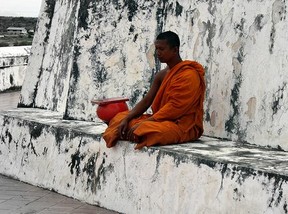 This Buddhist mantra is considered a sacred chant in Tibet. The first syllable “Om” is the sacred sound of the universe, and the syllable “hum” at the end is a traditional closing syllable in buddhist chants. The meaning of these two are untranslatable.
This Buddhist mantra is considered a sacred chant in Tibet. The first syllable “Om” is the sacred sound of the universe, and the syllable “hum” at the end is a traditional closing syllable in buddhist chants. The meaning of these two are untranslatable.
The central syllables do have, however, meaning. Manipadma is translated as Jewel-Lotus. This refers to the bodhisattva of compassion, also known as “Jewel-Lotus,” as well as to our own inner sense of compassion, and to higher wisdom.
Wisdom is what padma stands for, alone, and compassion is the jewel of our knowing and lack of ignorance.
The mantra calls on our inner wisdom and compassion to expel ignorance; but, what is most important is pronouncing and hearing the syllables, each of which are said to carry their own power and significance.
One of the easiest ways to start with chanting it is by listening to the Om Mani Padme Hum CD.
Another Tibetan mantra that is known to be very powerful is the mantra for Akasagarbha. This is the bodhisattva of boundless wisdom, and one of the 8 major bodhisattvas. His mantra in sanskrit is namo akasagarbhaya o? arya kamari mauli svaha (nomm oh akasa garb haya ohm ahr ya kah marie svah ha.)
This mantra translates quite beautifully into English as
wish the whole universe, 'OM', to pray all human beings flourish with all dedication.
Once again, each syllable and sound is more important than focusing on the meaning.
Nonetheless, contemplating what you are saying and letting it come from your innermost being is said to awake the bodhicitta, or, the desire to find enlightenment for the benefit of all sentient beings.
-
Shiken haramitsu daikoumyo
Shiken haramitsu daikoumyo (shee-keen hah rah meet soo die ko mee yo), is a famous Japanese Buddhist mantra that is rich and complex in meaning.
The actual japanese letters making up this mantra point out the illusion and instability of the mind and emotional states and tell us that the awakened, pure and loving heart leads to freedom through enlightenment.
The literal American translation is something close to:
seek a bright future of enlightenment by loving, being true and natural, and persevering with dedication.
Image credits: Creative Commons


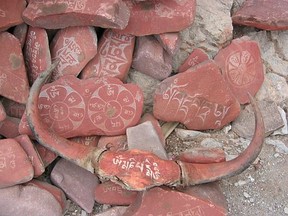 Mantra meditation is said to be capable of spiritual transformation and growth in the person practicing it. Chanting mantras has been used in practically every culture throughout the times, starting from the Vedic tradition of incorporating them in the mantra meditation.
Mantra meditation is said to be capable of spiritual transformation and growth in the person practicing it. Chanting mantras has been used in practically every culture throughout the times, starting from the Vedic tradition of incorporating them in the mantra meditation.
 This Buddhist mantra is considered a sacred chant in Tibet. The first syllable “Om” is the sacred sound of the universe, and the syllable “hum” at the end is a traditional closing syllable in buddhist chants. The meaning of these two are untranslatable.
This Buddhist mantra is considered a sacred chant in Tibet. The first syllable “Om” is the sacred sound of the universe, and the syllable “hum” at the end is a traditional closing syllable in buddhist chants. The meaning of these two are untranslatable.



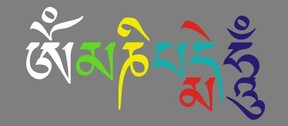 Maybe the most popular, well known and most chanted mantra is the OM (also called AUM). It is said that if you practice mantra chanting of the OM for 15 minutes every day, you can gain many benefits of meditation as a result. It can calm and quiet the busy mind and help you greatly de-stress.
Maybe the most popular, well known and most chanted mantra is the OM (also called AUM). It is said that if you practice mantra chanting of the OM for 15 minutes every day, you can gain many benefits of meditation as a result. It can calm and quiet the busy mind and help you greatly de-stress.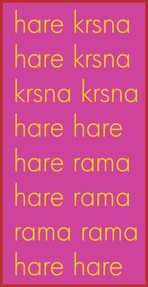 The Hare Krishna mantra is another quite powerful mantra. It has become widespread in our world as well. Coming from the Vedas, it is said to be one of the most powerful mantras in existence today. This mantra has an actual meaning from Sanscrit and the translation is: Hare - he who removes illusion and Krishna - He who is the source of all pleasure.
The Hare Krishna mantra is another quite powerful mantra. It has become widespread in our world as well. Coming from the Vedas, it is said to be one of the most powerful mantras in existence today. This mantra has an actual meaning from Sanscrit and the translation is: Hare - he who removes illusion and Krishna - He who is the source of all pleasure.


 Using mantras is easy, and it can be done anywhere. We benefit the most from hearing them aloud, but contemplating one or more of the syllables, allowing them to repeat inside our mind, or participating in mental chanting is also very lucrative.
Using mantras is easy, and it can be done anywhere. We benefit the most from hearing them aloud, but contemplating one or more of the syllables, allowing them to repeat inside our mind, or participating in mental chanting is also very lucrative.





 Percy Jackson Books In Orderon 10/15/2014
Percy Jackson Books In Orderon 10/15/2014
 Meditation For Pregnancyon 09/25/2013
Meditation For Pregnancyon 09/25/2013
 New Age Meditationon 09/23/2013
New Age Meditationon 09/23/2013
 How To Use Essential Oils With Reikion 09/22/2013
How To Use Essential Oils With Reikion 09/22/2013

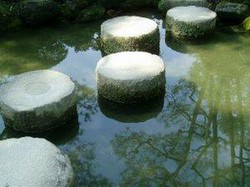
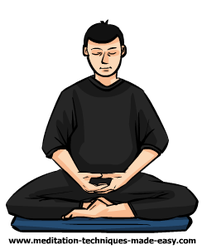
Do You Use A Mantra For Meditation?